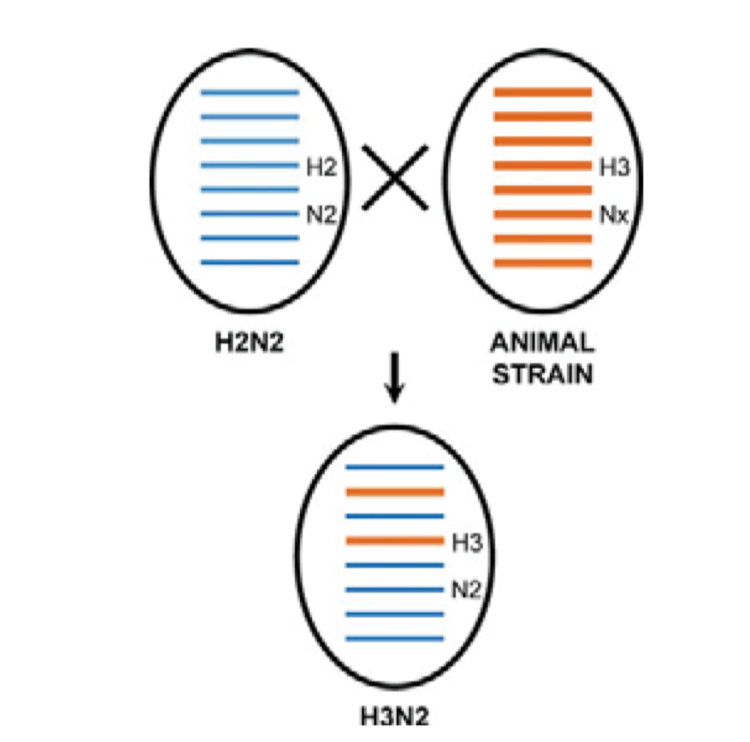I'm back and this time I'm loath to explain that SARS-CoV-2 ≠ influenza.
This is really exhausting. Can people please just not opine on subjects they don't know about. Stop with the epistemic trespassing. Talk to people more knowledgeable than you in that area first.
Anyway
This is really exhausting. Can people please just not opine on subjects they don't know about. Stop with the epistemic trespassing. Talk to people more knowledgeable than you in that area first.
Anyway

SARS-CoV-2 and influenza(s) are both RNA viruses, meaning that their genome is made out of RNA, rather than DNA like ours.
RNA genomes come in 3 flavors: positive sense, negative sense, and ambisense.
Sense RNA is the RNA that encodes a protein. Positive sense viruses
RNA genomes come in 3 flavors: positive sense, negative sense, and ambisense.
Sense RNA is the RNA that encodes a protein. Positive sense viruses
use sense RNA as their genome.
Negative sense viruses use antisense RNA. The antisense RNA is complementary to a sense RNA strand but does not itself encode any protein (it is used as a template to make sense RNA during the life cycle of the virus).
Negative sense viruses use antisense RNA. The antisense RNA is complementary to a sense RNA strand but does not itself encode any protein (it is used as a template to make sense RNA during the life cycle of the virus).
Some viruses have double-stranded RNA genomes which are ambisense- having both positive and negative sense RNA.
This is a very crude way of classifying viruses but it's important. And more to the point: influenza is a negative sense virus while SARS-CoV-2 is positive sense.
This is a very crude way of classifying viruses but it's important. And more to the point: influenza is a negative sense virus while SARS-CoV-2 is positive sense.
There's also the fact that SARS-CoV-2 has a huge (by viral standards) genome that exists in one segment.
Influenza on the other hand has its genome split among 8 segments (for A and B viruses; C viruses have 7). This contributes to its ridiculous strain diversity because it...
Influenza on the other hand has its genome split among 8 segments (for A and B viruses; C viruses have 7). This contributes to its ridiculous strain diversity because it...
allows different influenza viruses to recombine and exchange segments of their genomes with each other to produce new influenza viruses.
SARS-CoV-2 by contrast is much more stable antigenically:
https://www.pnas.org/content/117/38/23652
SARS-CoV-2 by contrast is much more stable antigenically:
https://www.pnas.org/content/117/38/23652
Their reproductive cycle is also quite different.
Once inside the cell, influenza's RNA is immediately transported to the nucleus where it replicates. Replication can be inhibited with the drug Baloxavir.
Coronaviruses do not generally involve the nucleus in replicating.
Once inside the cell, influenza's RNA is immediately transported to the nucleus where it replicates. Replication can be inhibited with the drug Baloxavir.
Coronaviruses do not generally involve the nucleus in replicating.
They also form double membraned vesicles that make huge quantities of subgenomic RNA.
They are also very different in some other important aspects. For one, the incubation period for influenza is typically 1-2 days. For SARS-CoV-2 it can be 2-12 days.
They are also very different in some other important aspects. For one, the incubation period for influenza is typically 1-2 days. For SARS-CoV-2 it can be 2-12 days.
The reproductive number for seasonal influenza is about 1.3- meaning each person who gets it will pass it to on average 1.3 people. For SARS-CoV-2 the value is usually given as 2-3. Consequently, it can spread dramatically faster than influenza.
COVID-19 also has a higher case-fatality ratio than influenza.
Since the beginning of this pandemic COVID-19 has killed more people in the US than the last 6 years of seasonal influenza combined and that gap is only going to widen.
Since the beginning of this pandemic COVID-19 has killed more people in the US than the last 6 years of seasonal influenza combined and that gap is only going to widen.
Now, I worry that people will read this and think they don't have to worry about influenza. That's wrong.
Influenza is the most common viral cause of pneumonia.
It also dramatically increases your risk of heart attacks.
It can cause myocarditis.
Influenza is the most common viral cause of pneumonia.
It also dramatically increases your risk of heart attacks.
It can cause myocarditis.
It can cause cytokine storms.
It can also cause an acute necrotizing encephalopathy where your brain cells just start dying en masse (rare).
It is the most commonly associated virus with Reye's syndrome in children (along with varicella).
It can cause Guillain-Barre syndrome.
It can also cause an acute necrotizing encephalopathy where your brain cells just start dying en masse (rare).
It is the most commonly associated virus with Reye's syndrome in children (along with varicella).
It can cause Guillain-Barre syndrome.
It's also been associated with a toxic shock-like syndrome.
It is especially serious in the very young.
Influenza is a serious public health threat just like COVID-19.
But unlike with COVID-19, we have a safe and effective vaccine.
Get your flu shots. Wear your masks.
It is especially serious in the very young.
Influenza is a serious public health threat just like COVID-19.
But unlike with COVID-19, we have a safe and effective vaccine.
Get your flu shots. Wear your masks.

 Read on Twitter
Read on Twitter




